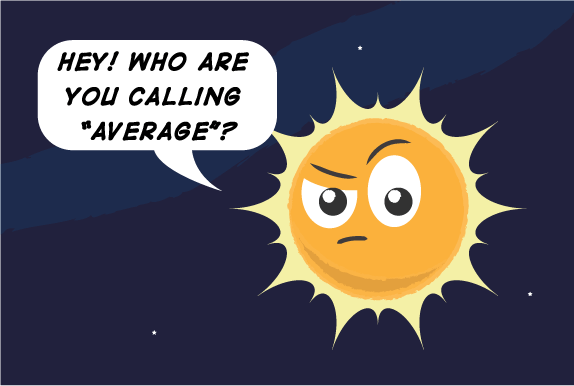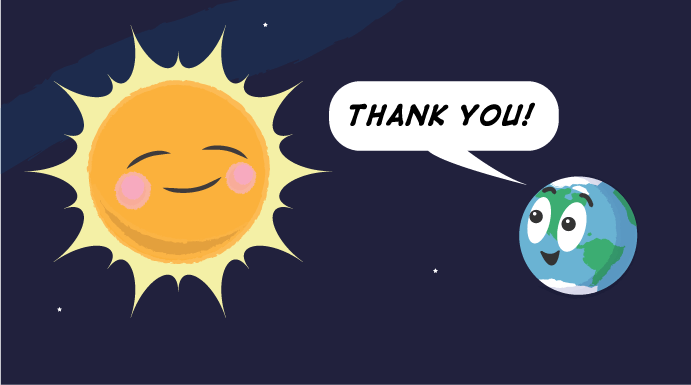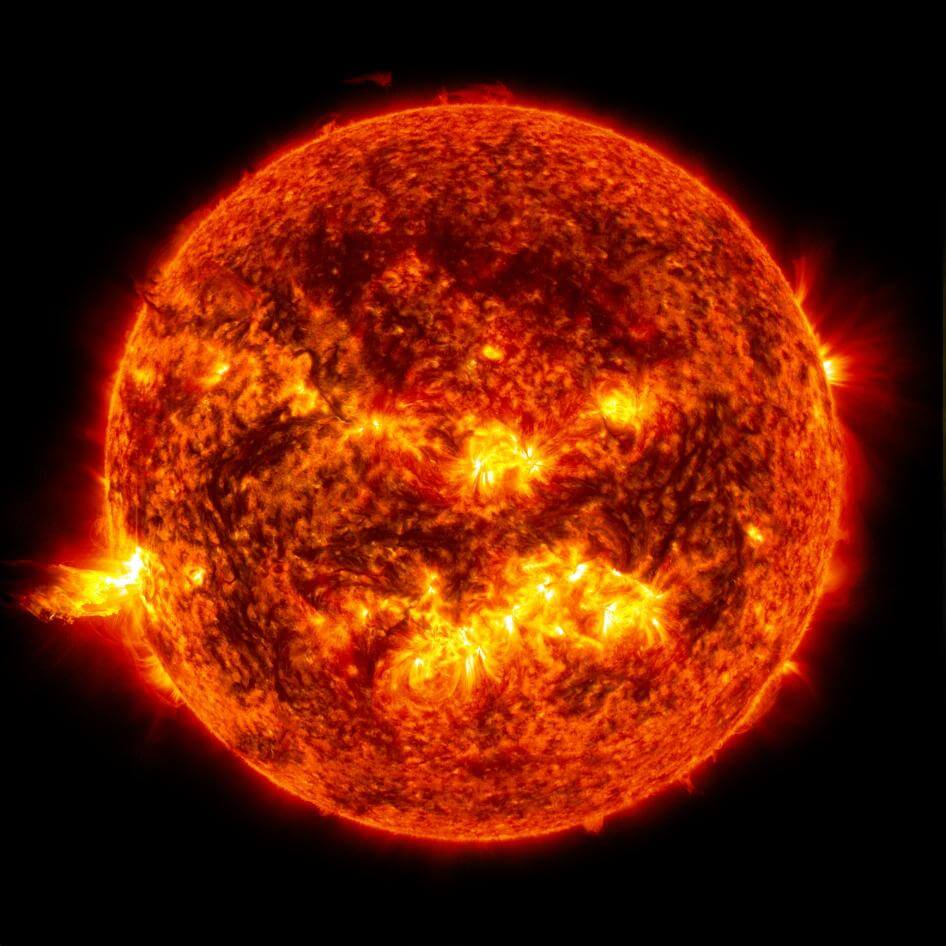All About the Sun
A star is a hot, glowing ball of gas. When you look up in the night sky, you can see countless twinkling stars. Can you see any stars during the daytime? Of course! The light of daytime comes from our closest star: the Sun.
All 3D models in the page have loaded
Explore the Sun! Click and drag to rotate the Sun. Scroll or pinch to zoom in and out. Credit: NASA Visualization Technology Applications and Development (VTAD)
Just how close is the Sun to Earth? Way, way closer than other stars, but still pretty far away. It’s approximately 93 million miles away from Earth. That’s 400 times farther than the distance between Earth and the Moon!
However, it’s a good thing that Earth isn’t too close to the Sun. If we were too close, it would be way too hot to live here. The Sun’s surface is very hot, and its atmosphere is even hotter. And the Sun’s core is the hottest part of all, at a sizzling 27 million degrees Fahrenheit!
Our Sun is about 100 times wider than Earth, but it is just an average sized star. Astronomers have found some stars that are 100 times bigger than the Sun and others that are 10 times smaller.

The Sun is also right in the middle of its lifecycle. Right now, our Sun is in a stage called yellow dwarf. It is about 4.5 billion years old. In another 5 billion years the Sun will become a big, cool star called a red giant. A few billion years after that, it will become a small white dwarf star. It will shrink to around the same size as Earth, but it will weigh 20,000 times more.

Click the above image to expand it. Our Sun is in the middle of its lifecycle. It is a yellow dwarf star. Credit: NASA/JPL-Caltech
But even though our Sun is kind of an ordinary star, there are also a few things that make our Sun quite special. For example…
We can’t live without the Sun!
Life on Earth depends on the Sun. Here are just a few reasons why:
- The Sun’s gravity holds our entire solar system together. Our solar system is even named after the Sun (the Latin word for Sun is “sol”).
- Heat from the Sun makes Earth warm enough to live on.
- Without light from the Sun, there would be no plants or animals—and, therefore, no food and we wouldn’t exist.

Heat and light might be important for life on Earth, but the Sun sends other stuff, too. The Sun sends lots of other energy and small particles toward Earth. Earth’s protective magnetic field and atmosphere shields us from most of the energy and particles. But sometimes a big stream of these particles reaches Earth and interacts with the gases at the outer edge of our atmosphere. This causes streams of light in the sky, called auroras.
The Sun’s Neighbors
In our solar system, the closest planet to the Sun is Mercury. Our Sun’s closest star neighbor is called Proxima Centauri. It is approximately 4 light-years away.
What does the Sun look like?
First of all, you should never look directly at the Sun without very special protective eyewear. But NASA has many great pictures of the Sun for you to look at! Scientists use telescopes with filters to capture images of the Sun. These images help us learn about our star. The photo below was taken by a NASA spacecraft called the Solar Dynamics Observatory.

This image captured by NASA's Solar Dynamics Observatory on June 20, 2013, shows the bright light of a solar flare on the left side of the Sun. Credit: NASA/SDO
Have any spacecraft visited the Sun?
A spacecraft would easily burn up if it tried to fly into the Sun. However, NASA’s Parker Solar Probe is flying closer than any other robotic explorer ever has. It will be flying inside the Sun’s atmosphere, or corona. This spacecraft will help us learn more about how the Sun works and how solar activity starts. This helps us to be more prepared!
More fun facts about the Sun!
- The Sun goes through ups and downs in activity like solar flares. It gets more active with more sunspots and then less active over a period of 11 years. This is called the solar cycle.
- The Sun has been getting slowly brighter since it was born. A couple of billions of years ago, the Sun was a little dimmer than it is now.
- The Sun contains almost ALL of the material in our solar system. 99% of it. All the planets, asteroids and comets add up to less than 1% of the total.
- The Sun is so far away that it takes light about 8 minutes and 20 seconds for it to get to us – and light is the fastest thing in the universe.
Comments
Post a Comment